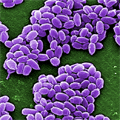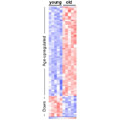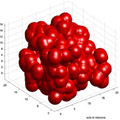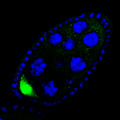
NIGMS supports all research featured in Biomedical Beat. Although only the lead scientists are named, coworkers and other collaborators also contributed to the findings.
Got research news to share? E-mail us at info@nigms.nih.gov.
|
In This Issue...December 17, 2008 |
|||
|
Holiday Images: Genetic Mismatch Like bright berries on a holly bush, proteins (red) attach to chromosomes being pulled apart by microtubules (green). Hover over the image to the next slide, though, and our perfect holiday image blurs because of mutations in an enzyme that helps control proper chromosome segregation. More... |
Quick Links | ||
|
Baking Soda Ingredient Makes Anthrax Deadly Bicarbonate, the active ingredient in baking soda, doesn't just make muffins rise—it also activates anthrax toxin. More...
|
Basic Research Ages Well Scientists have found new clues about aging in mammals that could lead to a useful therapeutic strategy for aging-associated disorders. More... |
Modeling Bloodstream Infections To better understand deadly bloodstream infections, scientists have modeled how bacteria shuttle between vessels and organs. More... |
Fertility Trait Determined by piRNAs We usually think of biological traits as stemming from DNA, but a new study shows that fertility in flies depends on another, maternally inherited factor. More... |







